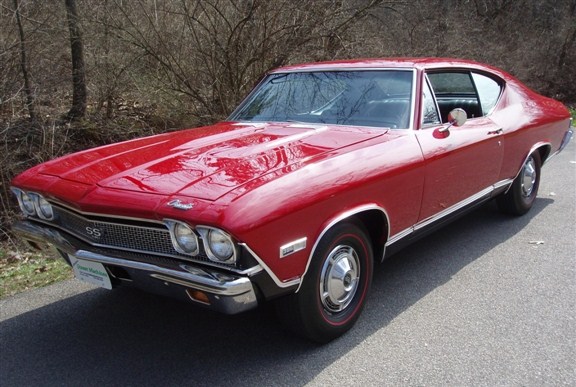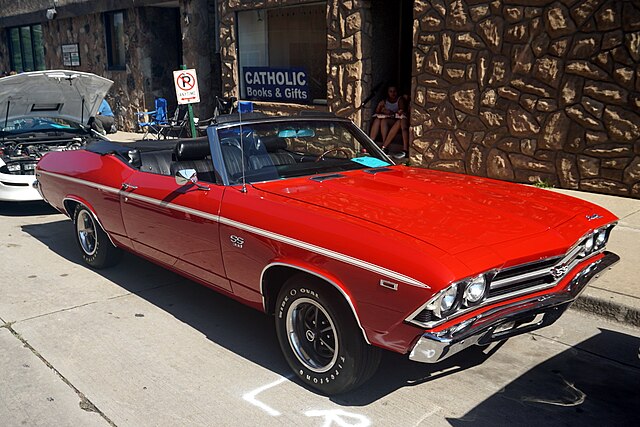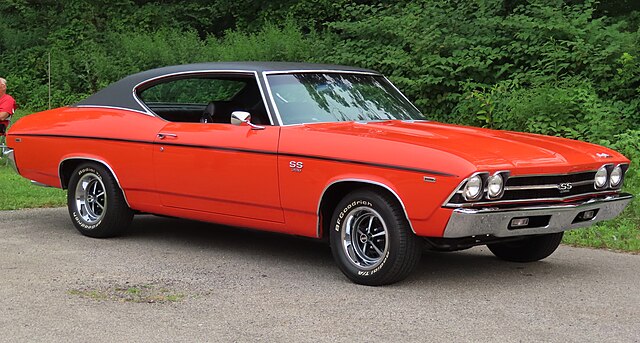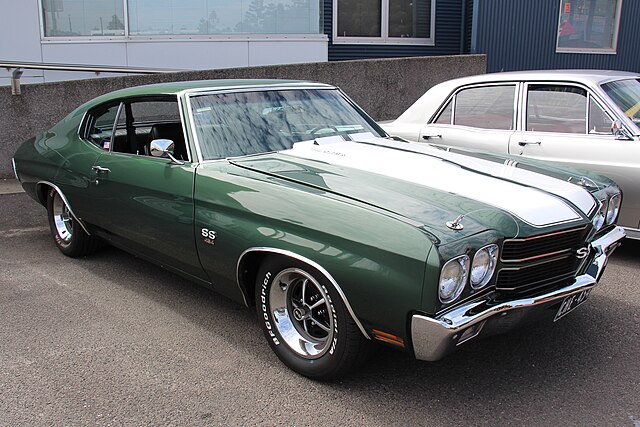
The Chevrolet Chevelle, particularly its second generation spanning from 1968 to 1972, stands as a quintessential icon of American muscle car culture. This model not only captured the hearts of car enthusiasts during its heyday but continues to be a revered collector’s item today.
This article delves into the history, design evolution, performance specs, and cultural impact of the second generation Chevelle.
Introduction to the Second Generation Chevelle
Chevrolet introduced the Chevelle in 1964 as a mid-sized car that could offer something for everyone, from families to speed enthusiasts. By the time the second generation rolled out in 1968, the Chevelle had firmly established itself in the American car market.
This generation brought significant changes in style and performance, marking the Chevelle’s prime years in the muscle car era.
Design Evolution

1968: The Year of Change
The 1968 model year was pivotal for the Chevelle, featuring a completely redesigned body and a more aggressive stance. This model introduced a shorter wheelbase for the two-door models and a longer, more streamlined look.
The most notable change was the introduction of the semi-fastback styling on the Sport Coupes, giving the Chevelle a more dynamic and sporty appearance.
1969-1972: Refinement and Muscle
Over the next few years, Chevrolet continued to refine the Chevelle’s design. The 1969 model featured a more angular front end with a redesigned grille and headlights, enhancing its aggressive posture.
By 1970, the Chevelle received what many consider its most significant facelift: the introduction of the iconic dual-headlight arrangement and a more pronounced front grille.
The 1971 and 1972 models saw subtle changes, primarily in the front-end and rear bumper designs, aligning with the industry’s shift towards integrating bumpers as a safety feature.
Performance and Powertrains

Engine Options
The second generation Chevelle offered a wide range of engines, catering to both the everyday driver and the power-hungry enthusiast. The lineup included everything from modest six-cylinder engines to powerful V8s.
The highlight, however, was the introduction of Chevrolet’s big-block engines in the SS models, which included options like the 396 and later the legendary 454 cubic inch engines.
SS Models: The Pinnacle of Performance
The Super Sport (SS) models of the Chevelle represented the pinnacle of its performance capabilities. Initially, the SS badge was synonymous with performance upgrades, including better suspension, stronger brakes, and more robust drivetrains.
The 1970 SS 454, equipped with the LS6 engine option, is particularly famous, boasting 450 horsepower and 500 lb-ft of torque, making it one of the most potent production cars of the era.
Cultural Impact and Legacy

Chevelle in Motorsports
The Chevelle also made its mark in motorsports, particularly in stock car racing. Its robust engine options and adaptable chassis made it a favorite among racers in the NASCAR circuits during the late 1960s and early 1970s. The performance of the Chevelle in these competitions helped to cement its reputation as a reliable and powerful muscle car.
Influence on Pop Culture
Beyond the racetrack, the Chevelle has been a popular figure in American pop culture, frequently appearing in films, television shows, and music. It is often portrayed as a symbol of freedom and rebellion, epitomizing the American spirit of the 1960s and 1970s. The Chevelle’s appeal is such that it continues to be a sought-after model for restoration and is a staple at classic car shows.
Collectibility and Market Today

Restoration and Nostalgia
Today, the second generation Chevelle is highly prized for restoration. Its relatively simple design and the availability of replacement parts make it an excellent project for enthusiasts. The nostalgia associated with the Chevelle, coupled with its beautiful lines and powerful performance, drives its popularity in the collector’s market.
Market Values
The market values for the second generation Chevelle can vary significantly based on the model, condition, originality, and the specific engine it houses. Models equipped with big-block engines, especially the SS 454 with the LS6 engine, command the highest prices, often reaching six figures at auctions.
Preservation and Enthusiast Community

Preserving History
The preservation of the Chevrolet Chevelle, especially models from 1968 to 1972, is taken very seriously by enthusiasts and collectors. Preservation involves more than just maintaining the car in working condition; it extends to preserving its authenticity and original features.
Enthusiasts often seek out original parts and period-correct modifications to ensure that these cars are restored to their former glory. This dedication to authenticity enhances not only the car’s aesthetic and historical value but also its financial value.
Enthusiast Community and Events
The Chevrolet Chevelle enjoys a robust and vibrant community of enthusiasts. Clubs and online forums dedicated to the Chevelle offer owners and admirers a platform to share advice, parts, and stories. These communities often organize events such as car shows, swap meets, and road trips, providing opportunities for members to display their vehicles and share their passion for this classic American muscle car.
Impact of Community on Preservation
The enthusiast community plays a crucial role in the preservation of the second generation Chevelle by fostering an environment where knowledge and resources are shared. Newcomers to the hobby can rely on experienced restorers for guidance on maintaining and restoring their vehicles.
This culture of support ensures that the skills and knowledge necessary to keep these classic cars on the road are passed down through generations.
Celebrating the Chevelle
Annual events like the Chevelle Nationals bring together owners and fans from across the country. These gatherings are not just about showcasing cars but also serve as a testament to the lasting impact of the Chevelle on American car culture.
Here, stories are shared, friendships are forged, and the spirit of the 1960s and 1970s—when these cars ruled the roads—is kept alive.
Conclusion
The Chevrolet Chevelle 2nd generation not only exemplified the muscle car era with its robust performance and striking designs but also left a lasting impact on car culture and motorsports.
Its legacy as a symbol of American automotive history continues to grow, ensuring that the Chevelle remains beloved by collectors and enthusiasts around the world.
